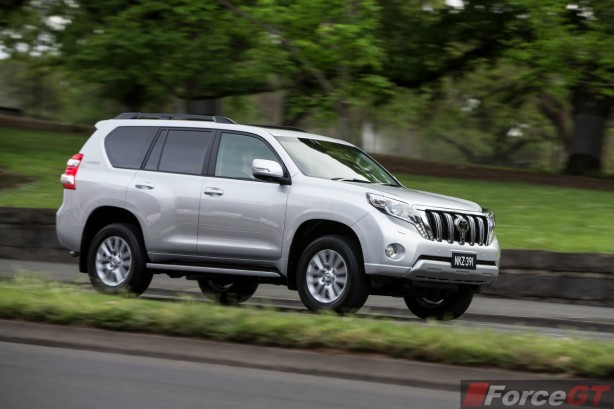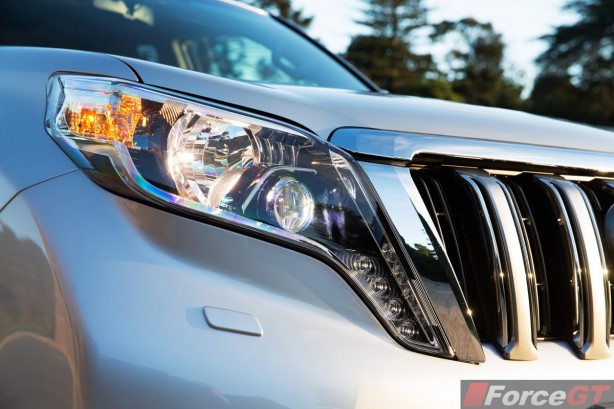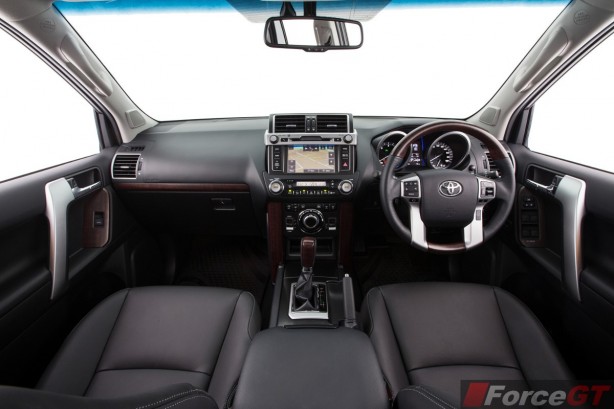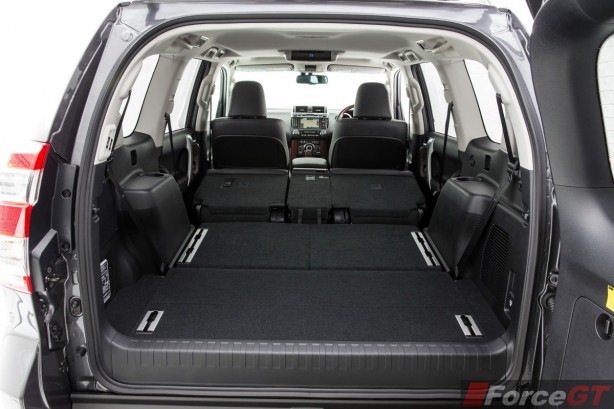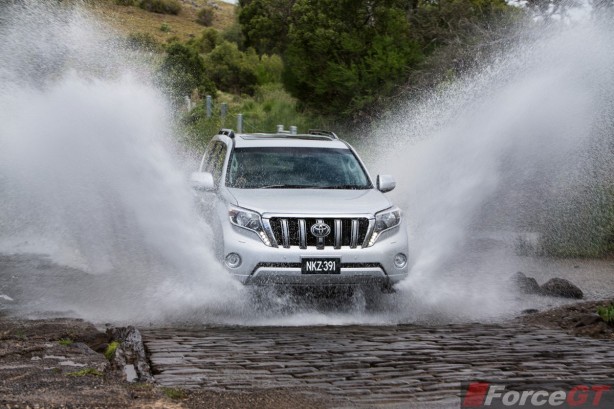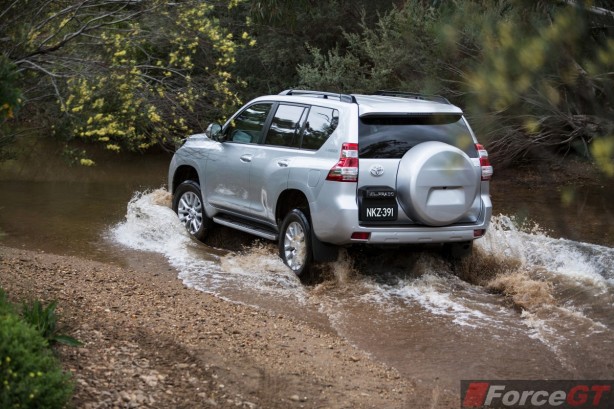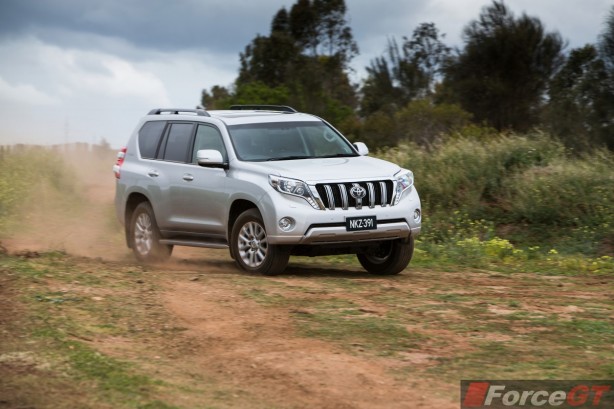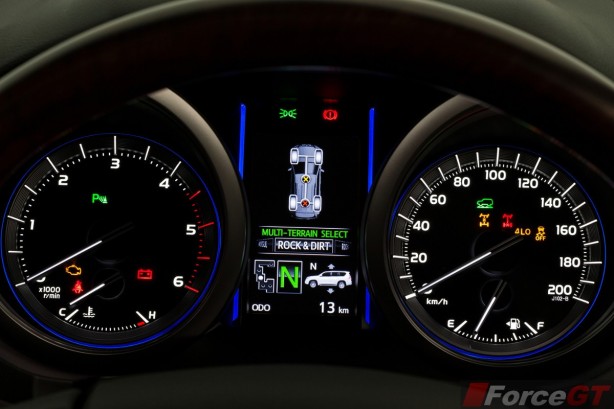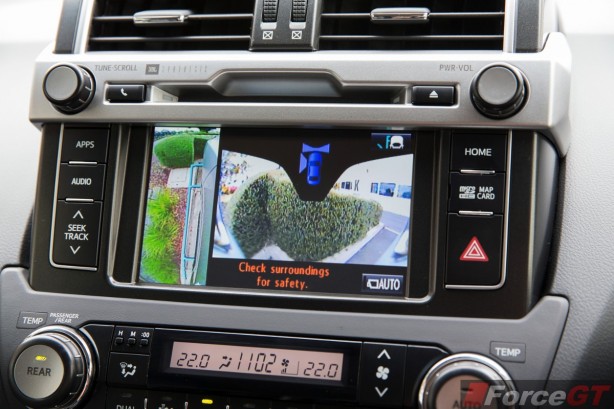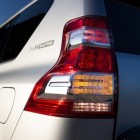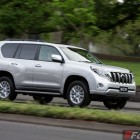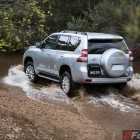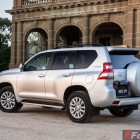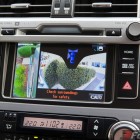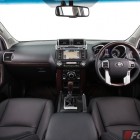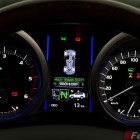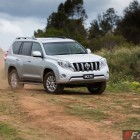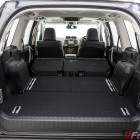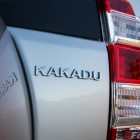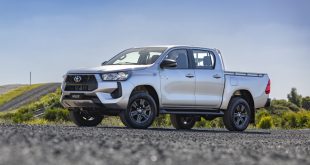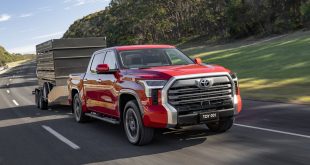Toyota has given its iconic four-year old LandCruiser Prado a subtle mid-life facelift, with a nip-tuck that brings a nose job, extra equipment and a moderate price hike.
It has also taken the opportunity to scale back the number of variants to eleven, ditching the slow-selling three-door version.
What’s unchanged though, are the bits that make the LandCruiser Prado, the LandCruiser Prado. Unlike most car-based “pretend” SUVs, the Prado sits on a heavy-duty separate chassis with live axles, giving it proper mud crawling and load towing capacities.
However, Toyota has also worked on making the latest Prado more refined and comfortable inside.
With increased competition, especially from the increasing popular Jeep Grand Cherokee, can the LandCruiser Prado hold its ground?
Let’s find out….
Styling
The new Prado’s frontal renovation starts with what Toyota describes as a “heritage-inspired” grille. It’s bold; with lots of chrome around the five slotted bars.
It is flanked by a pair of restyled headlamps featuring contrasting black and powder-coated aluminium internal finish and LED daytime running lights (standard on our range-topping Kakadu, along with the VX). Further down, there’s a deeper front bumper to round off the front fascia makeover.
Like any mid-life makeovers, there are the pre-requisite, freshly styled set of 18-inch alloy wheels to enhance the car’s profile, while at the other end, the tail-light clusters have been redesigned with clear lens blocks inset with red accents. The LandCruiser logo is integrated within the lamp casing as well.
Climb inside and you are greeted by new switchgear and instruments, as well as new colour schemes and trimmings that lift the cabin ambience. There remains a plethora of soft-touch surfaces and the built quality is second to none.
A 7-inch colour screen finds pride of place on the centre console, while a revised instrument binnacle incorporates new-look speedometer and tachometer dials.
Score: 7.0/10
Space and Practicality
Under the rejuvenated skin, Toyota hasn’t messed with the car’s winning formula.
There is no change to the car’s 11.6 metres turning circle or approach (32o), departure (25o, 24o on the Kakadu) and ramp-over (22o) angles, safeguarding the Prado’s manoeuvrability and off-road prowess.
It’s overall length (4,930mm), wheelbase (2,790mm), width (1,885mm) and height (varies between 1,845 and 1,890mm depending on variant) are retained as well.
The front seats are generally supportive and comfortable, while the redesigned rear seat helps access to the third-row seat (standard on Kakadu and VX). When not in used, the third-row seats can be electrically folded away for more luggage space. Middle row passengers also enjoy vast amount of legroom space and it goes without saying that headroom is plentiful.
However, the hefty spare wheel remains mounted on the side-hinged tailgate, making opening a chore.
Score: 8.0/10
Performance
The new LandCruiser Prado carries over both its engines – a 127kW/410Nm 3.0-litre turbo-diesel matched to either a 6-speed manual or 5-speed automatic that is favoured by 95% of buyers, or the familiar 4.0-litre quad-cam V6 petrol that generates 202kW of power and 380Nm of torque, connected to a 5-speed auto with sequential shift function.
Both transmissions are married to a full-time four-wheel drive system with a lockable Torsen centre differential and two-speed transfer case.
Fuel consumption is rated at 8.5L/100km for the diesel (8.8 for the manual) and 11.5L/100km for the petrol. On test, the Kakadu managed 11.6L/100km of mixed driving consisting of urban, freeway and some off the track driving.
While the Toyota’s 2,500kg towing capacity may seem competitive at first, it falls short of many ute-based 4WDs’ 3,000kg-plus towing capacity. It also tows 200kg less than Ford’s turbo-diesel Territory.
However, grey nomads will be pleased to know that the Prado is now equipped with a trailer sway control system that is designed to suppress trailer swaying when towing.
Score: 7.5/10
Ride and Handling
Like most of Toyota’s recent models, the LandCruiser Prado has received local ride and handling tuning for its suspension, stability and traction control systems and off-road controls.
The car underwent approximately 450,000km of local testing to ensure it meets the demands of Australians customers.
The Kakadu (and VX) gets an improved version of the Australian-developed Kinetic Dynamic Suspension System (KDSS), featuring increased front-cylinder rod diameter and rear-cylinder piston diameter.
The range-topper also gets the added benefit of front and rear Adaptive Variable Suspension, and height-adjustable rear air suspension.
These changes have increased input force by optimising the performance of the front and rear cylinders, and has therefore optimisedl the front stabilizer bar diameter and thickness, front stabilizer bar bush inner diameter, front lower-arm stabilizer bracket thickness and the frame KDSS bracket thickness.
In Comfort mode, its extra suspension rebound actually makes for a less comfortable ride, even if occupants are more isolated from breaks in the road surface.
Flick the switch into Sport mode and there is a corresponding increase in stiffness, but that’s no passport to aggressive cornering, as body roll is still evident. The Prado’s steering remains vague, despite Toyota’s claim of ‘recalibration’ to increase build-up feeling off centre and improve connection to the road.
However, these are trade-offs that buyers have to take into consideration as the Prado’s off-road ability has been further refined and is now superb.
The Kakadu’s driver-selectable Multi-Terrain Select off-road traction control system now has an additional mode – rock and dirt – on top of four other modes (rock, mogul, loose rock and mud and sand).
The system controls wheel spin and wheel lock-up to ensure optimum traction in tough off-road conditions such as extreme bumps, slippery conditions and steep ascents.
On top of that, a Multi-Terrain Monitor, with front and side-mounted wide-angle cameras, lets the driver pin points the car’s exact position and clearance, making off-road driving a breeze.
Score: 8.0/10
Equipment
Priced from $55,990 for the GX 5 seat manual, the new Prado is well-specified. Standard equipment across the range includes seven airbags, rear-view camera, emergency brake signal, cruise control, a 220-volt rear accessory socket, Bluetooth connectivity and 17-inch alloy wheels.
Automatic GX models add Hill-Start Assist Control, Downhill Assist Control, while an option pack adds third-row seats and extends the side curtain airbags to the third-row.
The GXL, priced from $61,490, brings third-row seats as standard, three-zone climate control aircon, rear parking sensors, roof rails, front fogs and heated and power-retractable exterior mirrors amongst others.
Stepping up to the VX, priced from $78,990, adds the KDSS suspension, 18-inch alloys, LED headlights with daytime running lights, leather seats, power-adjusted steering column, power-folding third-row seat, 17-speaker premium JBL audio with DAB+ digital radio, satellite navigation and electro-chromatic interior mirror.
Priced from $91,590, the range-topping Kakadu gets additional features such as Blind Sport Monitor, Blu-ray rear-seat entertainment system, four-camera Multi-Terrain Monitor, electronic rear differential lock, Adaptive Suspension, height-adjustable and auto-levelling rear air suspension, moonroof, refrigerated cool box, Pre-Crash Safety System and radar cruise control.
Score: 8.0/10
Verdict
Yes, the competition has increased but the Toyota LandCruiser is still the pick if you are the active outdoor type, or need to tow a trailer occasionally. It is the only proper 4WD with a seven-seat option without needing to spend in excess of 6 figures.
As a bonus, it is also more comfortable than ever before.
| Price (Excl. on-roads): | From $55,990 to $91,590 | |
| As tested: $91,590 (Kakadu) | ||
| Warranty: | 3 years/100,000km | |
| Engine: | 4.0-litre V6 petrol 202kW @ 5,600rpm, 381Nm @ 4,400rpm, 4WD | |
| 3.0-litre inline 4-cylinder turbo-diesel 127kW @ 3,400rpm, 410Nm @ 1,600 – 2800rpm, 4WD | ||
| Service Intervals: | 6 months/10,000km | |
| Transmission: | 6-speed manual/five-speed automatic | |
| Combined Fuel Consumption (L/100km): | Petrol | Diesel |
| Claimed: 11.5 | Claimed: 8.5 /Tested: 11.6 | |
| Body: | 5-door SUV | |
| Safety: | 5-star ANCAP | |
| Dimensions L/W/H/W-B (mm): | 4,930 / 1,885 / 1,880 / 2,790 | |
| Kerb Weight (kg): | 2,205 – 2,435 | |
| Towing Capacity (kg): | Braked: 2,500 / Unbraked: 750 | |
| Ground Clearance (mm): | 220 | |
| Approach Angle (deg): | 32.0 | |
| Departure Angle (deg): | GX, GXL, VX: 25.0 / Kakadu: 24.0 | |
| Ramp-over Angle (deg): | 22.0 | |
| Max Wading Depth (mm): | 700 | |
 ForceGT.com Car News, Car Reviews, Video Reviews, Tuning and much more.
ForceGT.com Car News, Car Reviews, Video Reviews, Tuning and much more. 